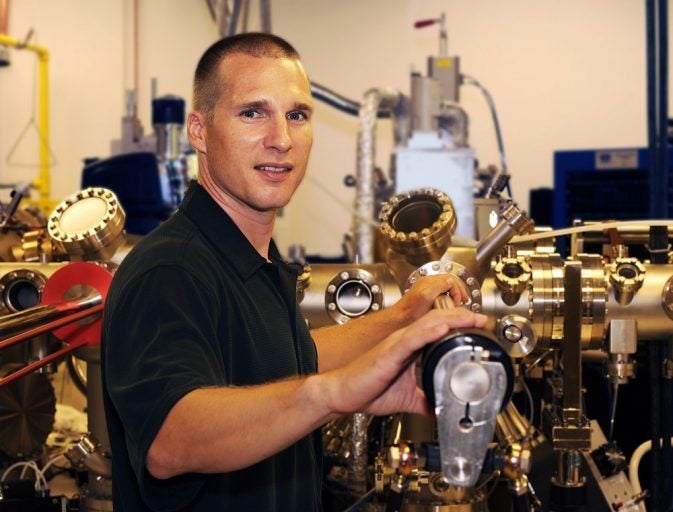Just like the industrial revolution and the information age transformed our society, the age of light promises to propel the nation into the next century of innovation.
The University of Central Florida is a leader in this exciting field that studies light and all the things it can do from creating sensors that detect cancer without biopsies to creating ultrafast computer connections that could change how we communicate with each other.
Since UCF opened CREOL, its College of Optics & Photonics, in 1987 it has been making a name for itself in this pioneering area. That’s why last fall the university formed a consortium to compete for a $110 million federal grant focused on integrated photonics (or light-based) manufacturing, which if awarded could push its work forward even faster.
UCF’s team, which includes 68 industry and 24 academic partners including Georgia Tech, Clemson University, North Carolina – Charlotte and the universities of Alabama-Huntsville and Illinois, is one of three chosen by the Department of Defense as finalists for the award.
“Integrated photonics will help us move to the next generation of innovation,” said Winston Schoenfeld, leader of PRISM – the Photonics Research Institute for Sustainable Manufacturing coalition. PRISM has reach across the nation and is poised to position Central Florida as the leader in this new technology revolution.
PRISM is anchored by the Florida Advanced Manufacturing Research Center, a state-of-the-art advanced manufacturing research facility already under construction in Osceola County. The center is focused on the next generation of universal smart sensors. The project has the support of various partners including Osceola, UCF and the Florida High Tech Corridor Council backed by $170 million. The commitment is indicative of strong regional investment in innovative infrastructure.
More than 40 U.S. House representatives and senators from across the South support PRISM’s bid for the federal funds.
“UCF’s proposal for a photonics research institute for sustainable manufacturing known as PRISM would allow the Department of Defense to utilize the expertise within the university’s renowned College of Optics & Photonics,” said U.S. Sen. Bill Nelson. “The research UCF is proposing would not only enhance the nation’s security and global competitiveness, it would be of great value to the Department of Defense and our nation as a whole.”
The possibilities are enormous. Optics and photonics is the science and technology of light: lasers, LEDs, LCDs, optical fibers, sensors and imaging systems for applications in industry, defense and medicine.
To see a video about UCF and its expertise in this field, click here.
Even as UCF waits to see if it lands the federal money, its researchers in CREOL and in partnership with others across the university are making headlines for their cutting-edge work. Among the most recent breakthroughs:
